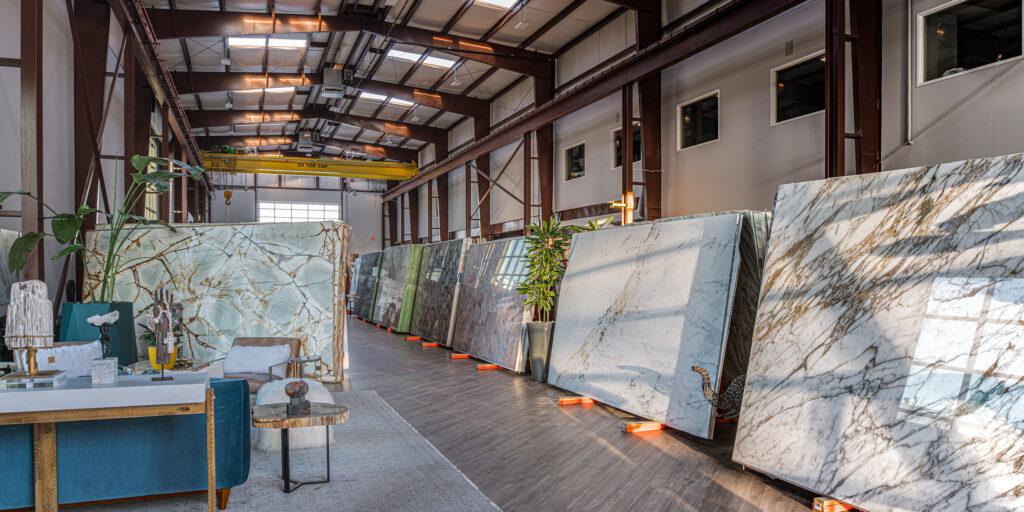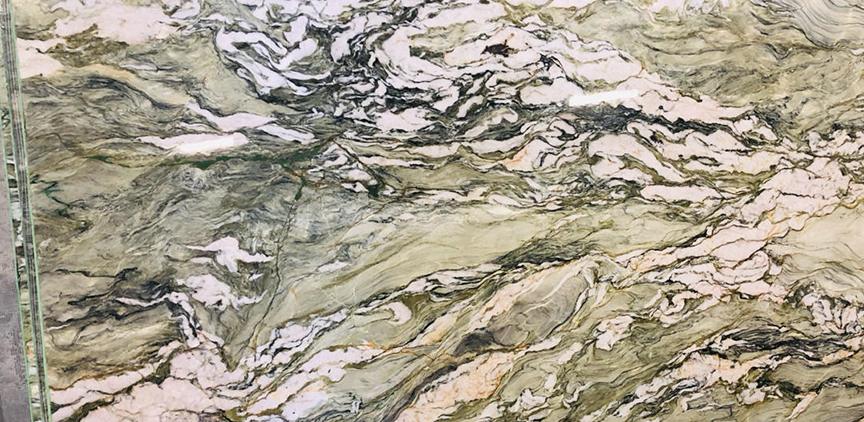Quartz and Quartzite– the names sound similar, and many even mistake them for the same thing or use their names interchangeably. But quartz and quartzite aren’t the same. We wanted to break down the differences and clear up any confusion in case you’re considering one or both of these as countertop options for your home.
Quartzite is a natural stone
Quartzite is 100% natural and is a metamorphic rock formed from sandstone. Quartzite begins its geologic life as sand grains, perhaps on a beach, desert dune, or riverbed. Over time, the sand grains become compressed and stuck together to form sandstone. As the sandstone is buried and pushed deeper into the Earth’s crust, it gets hotter and further compressed into a metamorphic rock. With enough heat and pressure (temperatures somewhere between 800° and 3000° F and pressures of at least 40,000 pounds per square inch), over the course of many, many years, the sand grains fuse together to form a dense, durable rock. Quartzite has formed in locations all around the globe, and the most well-known quartzite quarries are in Brazil. Quartzite is also quarried in the United States, Sweden, Canada, Norway, India, and Italy.
Quartz is man-made
Quartz is a man-made engineered stone formed by blending ground quartz (a natural hard mineral) with resins, polymers, and pigments to bind the ground quartz together. Engineered quartz is made in factories across the US, Europe, and Asia. Many quartz stones involve pouring the ingredients into a slab-shaped mold. The mixture is then subjected to heat, vibration, and pressure. The slabs are cured in a kiln, cooled and polished and ready to distribute.
Appearances
Quartzite comes in a variety of shades. It is often a shade of white or grey, although additional minerals carried by groundwater can create hues of green, blue, or iron-red, among other colors. The pattern and veining are determined by nature and, as such, quartzite has a more organic look that can have visual differences throughout the slab. No two slabs of quartzite will be exactly the same, as mother nature never makes the same thing twice.
Quartz is available in a lot of colors and patterns. When made, pigments can be added to achieve a wide variety of colors – light blues to pinks or even violet or orange. The slabs tend to have a more uniform pattern, whether flecked or veined throughout and can be made to resemble many different stones. If you’re going for a bold, solid, uniform appearance or maybe want something with no veining or patterns at all, quartz might be just the material for you.
Maintenance
Quartzite is a relatively hard stone, but is less impervious than quartz and is susceptible to staining. It requires annual sealing to prevent staining. Quartzite registers between a 7 and 8 on Moh’s mineral hardness scale, making it slightly harder and more scratch-resistant than quartz.
Quartz is a little lower maintenance. Because quartz is manufactured and goes through a binding process, it’s extremely durable, nonporous and doesn’t require sealing. The binding process makes quartz resistant to chipping, cracking, and bacteria. And because it repels moisture without a sealer, staining is less likely. It’s easy to clean with mild soap and water.
Handling the Heat
Quartzite is better at heat resistance than quartz which comes in handy for kitchen counters when you’re looking for a spot to place a hot dish.
Heat resistance is not the case for quartz. The resin used in quart melts at around 300 degrees, so a hot pan could leave a permanent mark or indentation on the counter.
Cost
Quartzite is often more expensive than quartz. The price is a result of the rarity of the color, the labor it takes to mine and procure solid blocks, and then deliver a beautiful slab straight from nature to your home. Quartz is cheaper to produce because once it’s bound with the resins and pigments, the molds create standard-size slabs.
Hopefully, this helps clear up any confusion on quartzite vs. quartz. Which is better? There’s just not a right or wrong answer. Natural quartzite and engineered quartz are both popular choices and are both excellent choices in many locations – kitchens, bathrooms, etc. Each material has it’s pros and cons, and it is truly up to the homeowner to decide the best look and product for the project.
Let Texas Counter Fitters help you tackle your next project. Our stone showroom, located in Richardson, Texas, is full of both quartz and quartzite, and we’d love to show you our favorite recommendations! See you soon!


